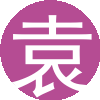[解析]
(1)D.推理判断题。根据下文每段的首句可知讲得是怎样吃有营养。所以D.But how do we know we're getting enough nutrients?(但是我们怎么知道我们获得了足够的营养呢?)符合语境。故选D。
(2)G.推理判断题。根据上一句 It's widely accepted by researchers that we need a varied diet.(研究人员普遍认为,我们需要多样化的饮食。)可知此处说的是需要多样化的饮食。所以G.And one way to do this is by eating all the colours of the rainbow.(一种方法是吃掉彩虹的所有颜色。)符合语境。故选G。
(3)E.细节理解题。根据下一句Blue and purple foods,including blueberries,have a high content of the plant anthocyanin (花青素),which has been linked to lowering the risk of heart disease and type 2 diabetes.(蓝色和紫色食物,包括蓝莓,含有大量的植物花青素,这与降低心脏病和2型糖尿病的风险有关。)可知此处说的是食物的颜色。所以E.Different coloured foods come with different benefits.( 不同颜色的食物有不同的益处。)符合语境。故选E。
(4)F.推理判断题。根据上一句For example,research has found that orange juice is associated with a lower risk of cognitive decline,but too much intake is associated with type 2 diabetes, " she says.Although,this is because of its sugar content,not flavones.(她说:"例如,研究发现橙汁与较低的认知下降风险相关,但摄入过多与2型糖尿病相关。"虽然,这是因为它的糖含量,而不是黄酮。)可知此处说的是根据颜色来吃也不一对全对。所以F.However,is colour the best guide to getting all the nutrients?(然而,颜色是获得所有营养的最佳指南吗?)符合语境。故选F。
(5)C.推理判断题。根据上一句Eating a rainbow diet may also be complex.(彩虹饮食也可能很复杂。)可知此处说的是彩虹饮食也可能很复杂。所以C.It could be really tricky to get every colour every day.(每天获取每种颜色可能真的很棘手。)符合语境。故选C。
